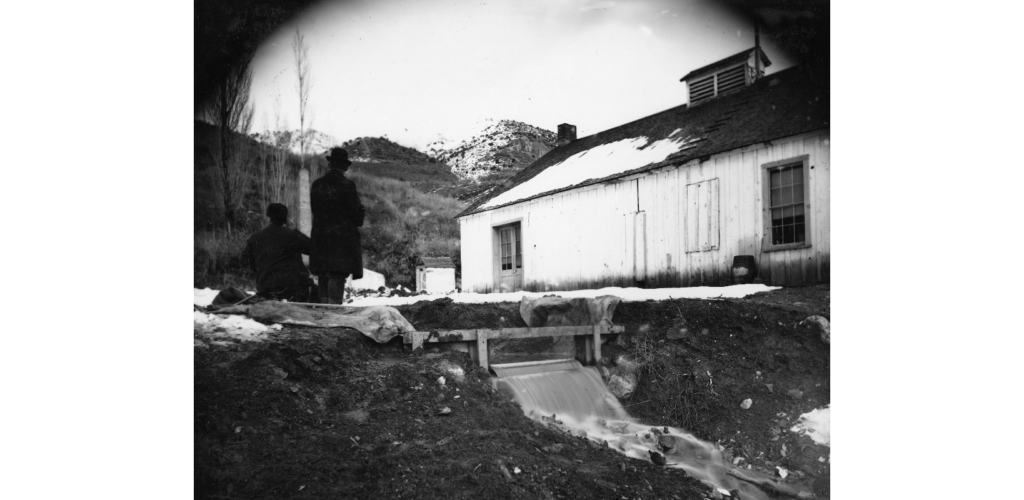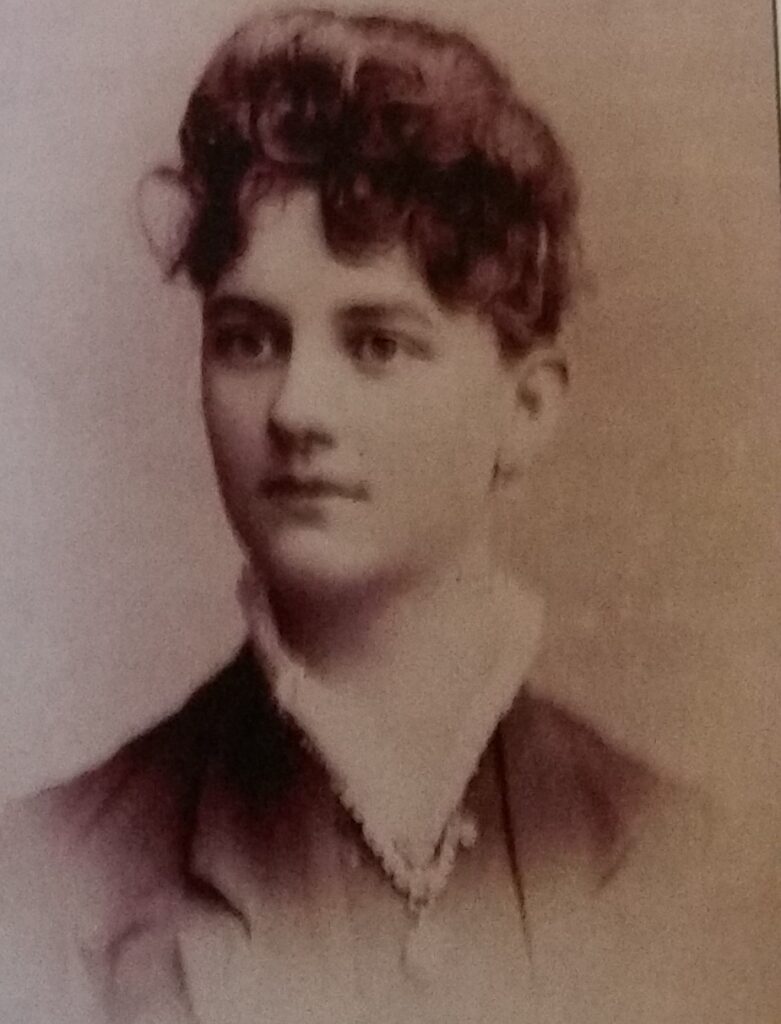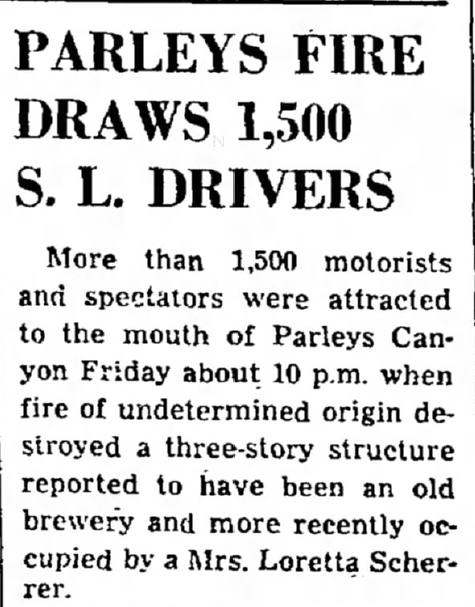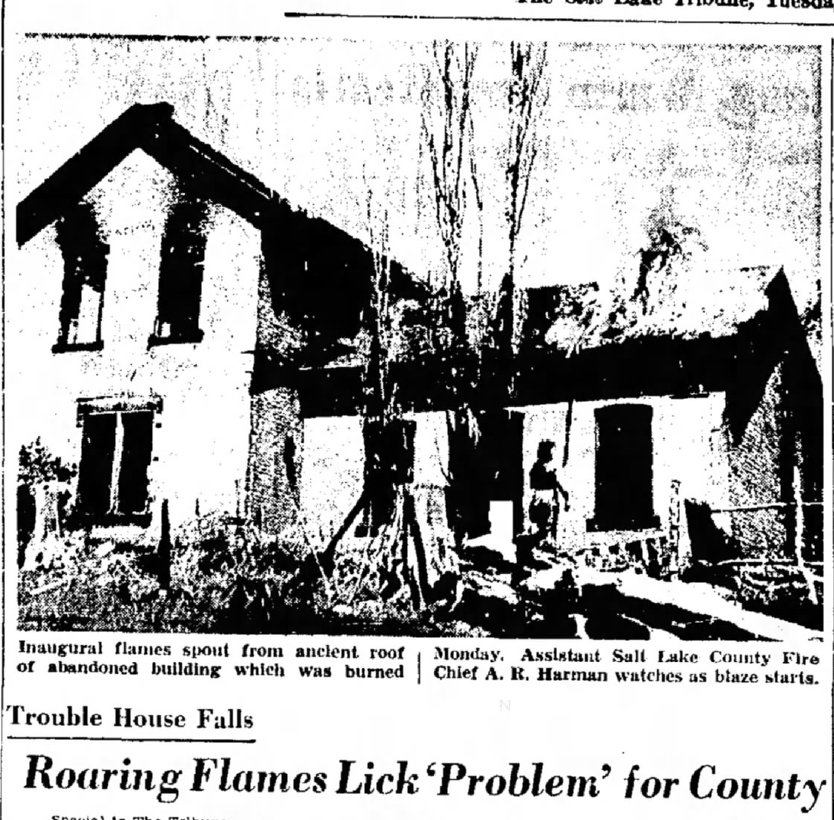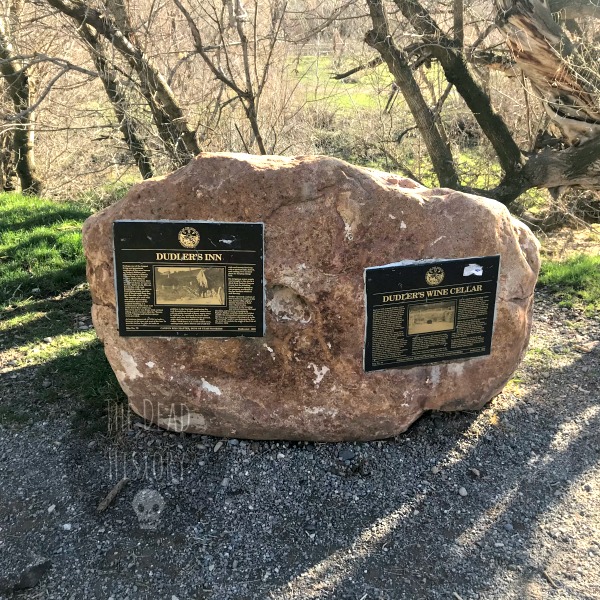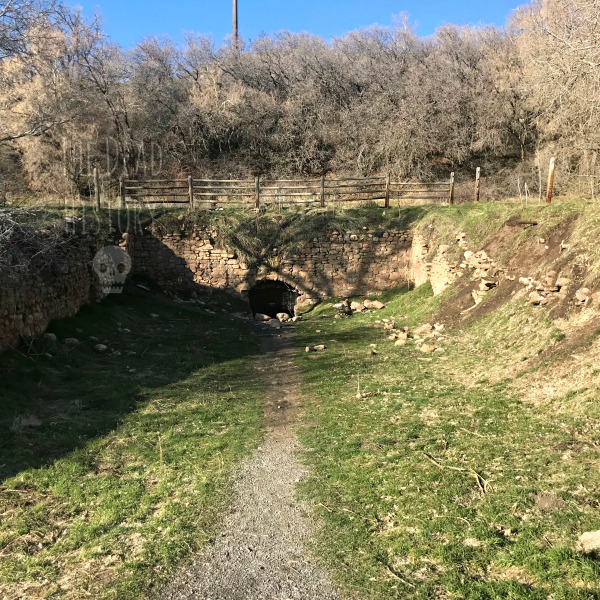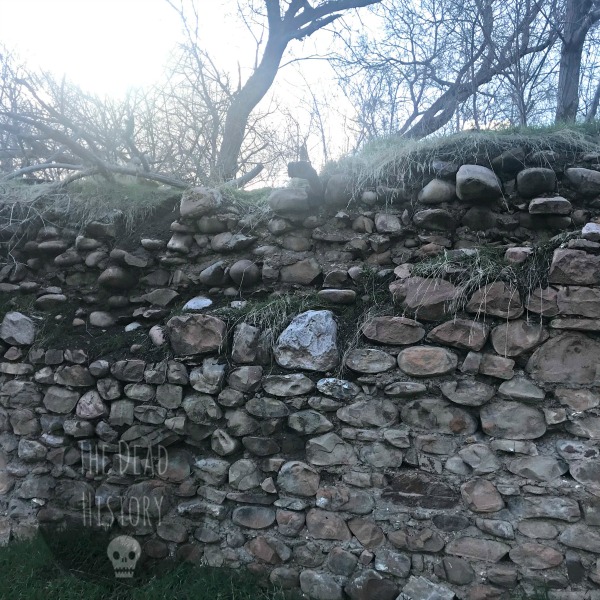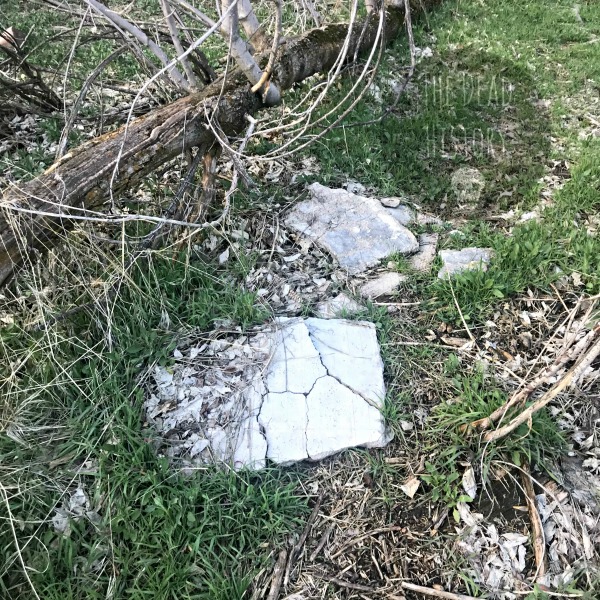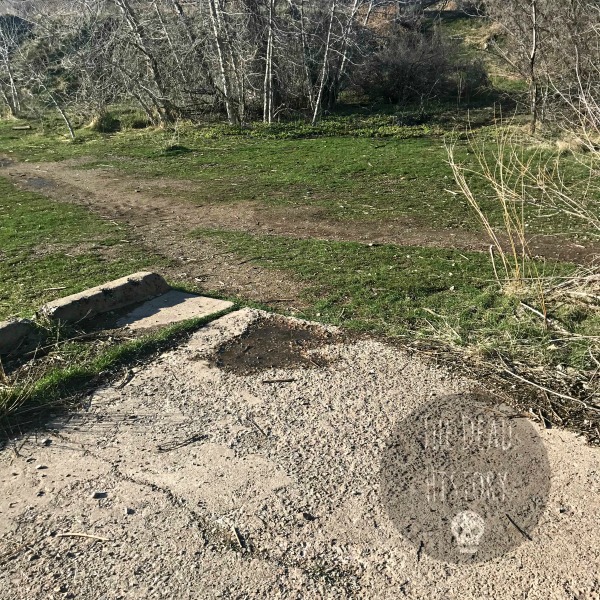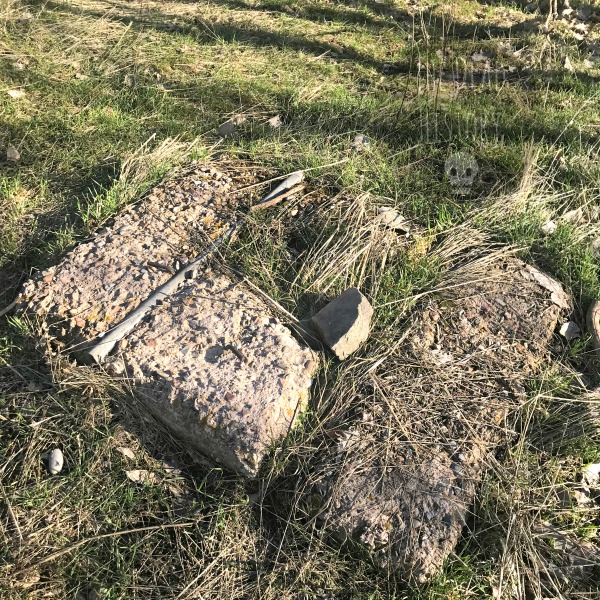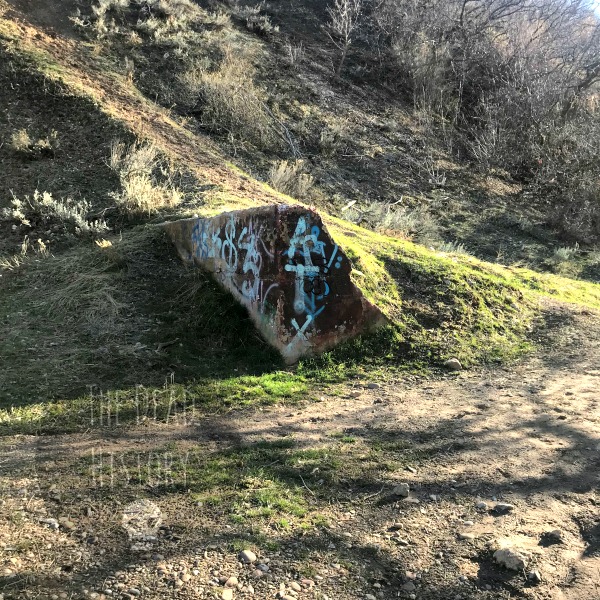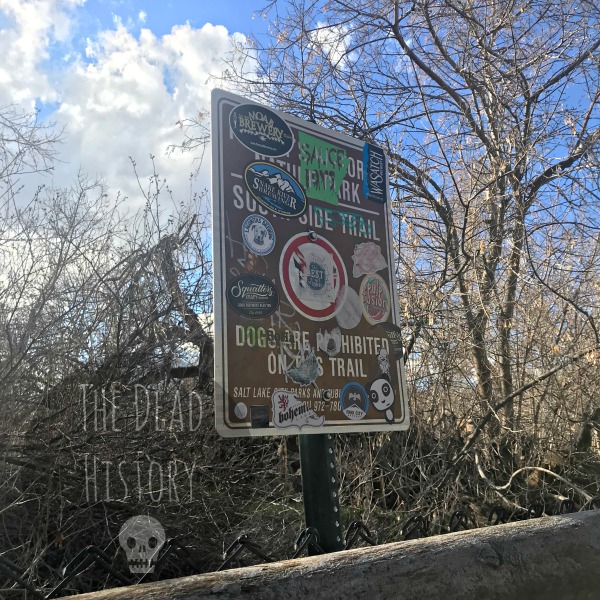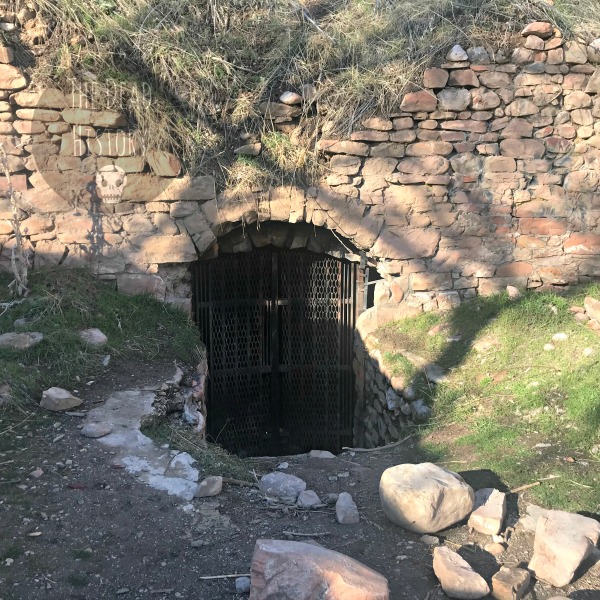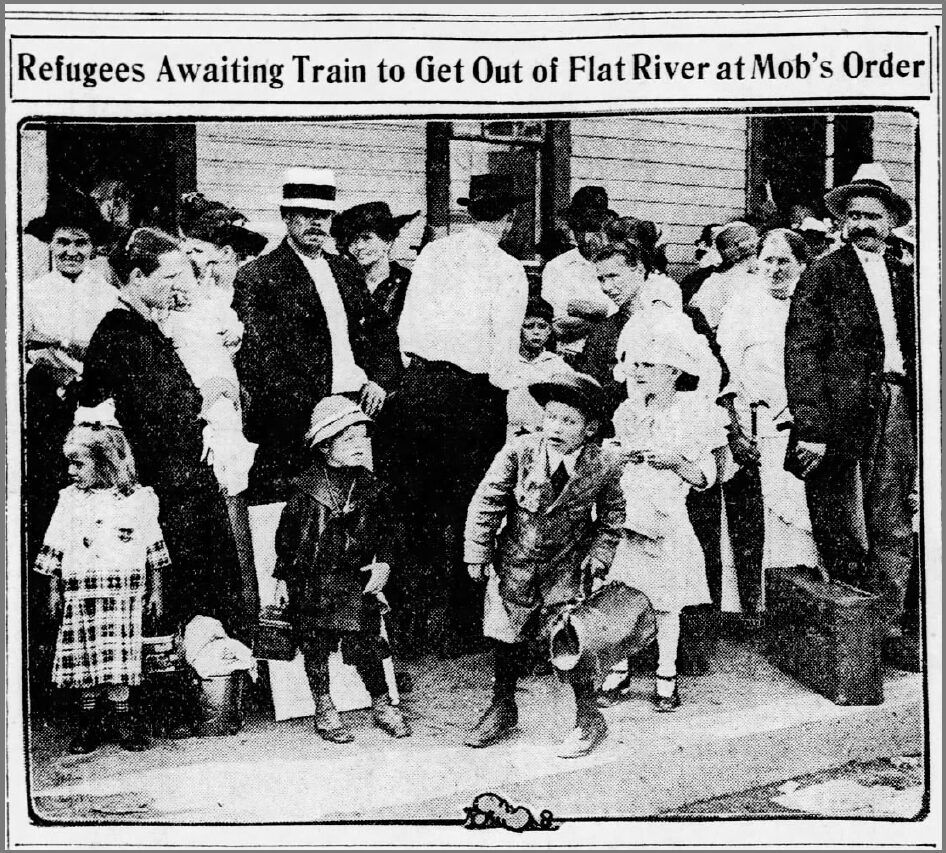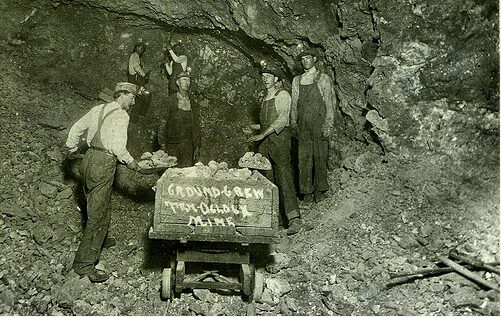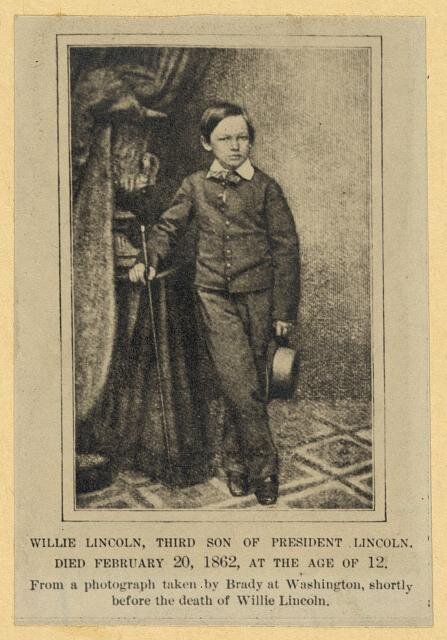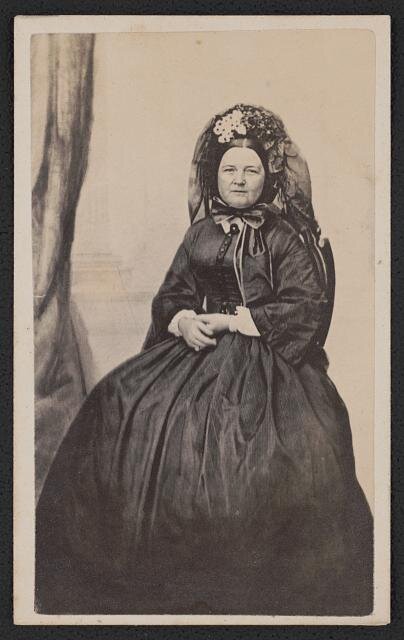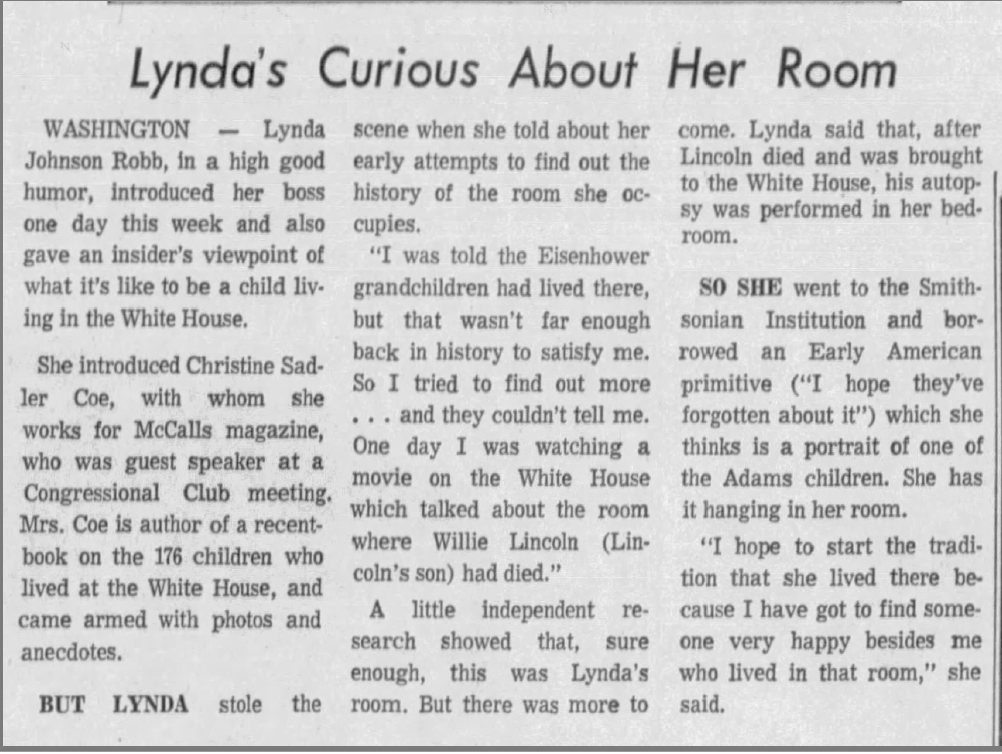The infamous Kay’s Cross (or what’s left of it) is located on private property in Kaysville, Utah. The site has historically been farmland for more than a hundred years. A large stone cross stood on the property for years before mysteriously turning to rubble in February of 1992. Despite the cross being almost entirely destroyed, the legends of its haunted nature still run rampant.
You might have seen Ghost Adventures link the cross to a dark, satanic force. Of course they did. Kids, don’t believe everything you see on TV, okay?
Since the late 1970s or early 80s, teenagers have snuck onto the property to see the cross themselves. Surrounded by trees and once considered remote, the trek felt undeniably creepy. Cutting through Kaysville Cemetery to reach Kay’s Cross made it even eerier. Legends about the cross grew and changed over the years, drawing in more curious kids.
The Legends…
If you want to explore more legends about Kay’s Cross, just do a quick Google search. I’ll share the most well-known story. A polygamist who owned the land killed seven wives and buried six around the cross. He buried one standing upright in the cross’s base and encased her heart in its center. As penance for his crimes, he hung himself from the cross.
And then, most likely due to the Satanic Panic of the 1980’s, there are the rumors that Satanists used the cross as an altar for their satanic rituals including sacrifices. Funny how Satanists seem to pop up at every haunted site in Utah. Didn’t realize they had so much free time!
Let’s be real for a moment. Would Satanists really trek to Kay’s Cross, haul ritual gear, and risk getting caught? Or is it more likely that bored kids snuck out at night to spray-paint satanic symbols?
K For Kingdom?
Like with other legends, the truth is often stranger than fiction. The real history of Kay’s Cross involves polygamists and a religious cult with a random connection to Charles Manson.
Anyone who has done basic research on Kay’s Cross knows that the mystery of who built the cross hasn’t been that much of a mystery since 1992; shortly after the cross was blown to smithereens. On April 5, 1992, the Deseret News reported on an interview conducted by a local historical society with a man who claimed he helped build the cross in the summer of 1946. The man’s name was Merlin Kingston.
The parcel of land that the cross is on has been owned by the Kingston Family since at least the early 1900’s. For those of you outside of Utah, the Kingston Clan is a well known polygamist family in Utah. So, K for Kingston, mystery solved, right? Well, not really.
According to Merlin Kingston, the cross was built in honor of Krishna Venta according to plans Venta himself had drawn. The large K at the top of the cross stood for Kingdom, a word that played a prominent role in Venta’s speeches. The arms of the cross were to be covered in glass and hold scriptures.
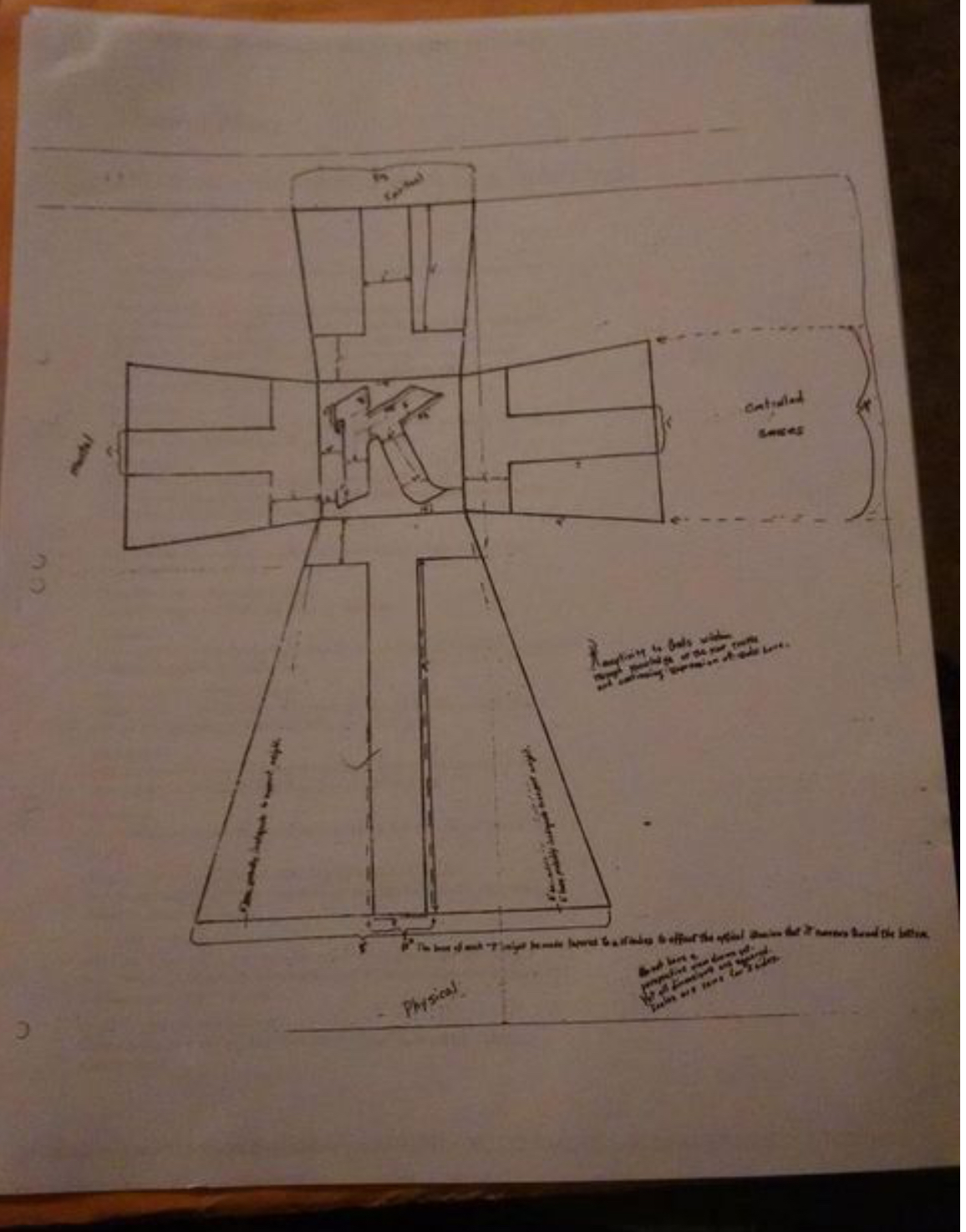

However, Venta left the area before completing the cross. So who was Krishna Venta, why did someone honor him with a stone cross, and how did he meet Merlin Kingston?
Francis Pencovic aka Krishna Venta
Krishna Venta, born Francis Pencovic, was a religious cult leader who gained popularity in the 40’s and 50’s. He also just so happened to have lived in Utah for a few years. And he became acquainted with Merlin Kingston’s brother while serving in the Army.
Venta was your classic cult charlatan. He was born in San Francisco in 1911. By the time he turned 30, he had amassed a long record of arrests for petty crimes, including sending a letter to the President of the United States that authorities perceived as threatening.
By 1941, he was well on his way to becoming a cult leader. That year, he traveled to Alaska with his first wife, their two children, and his secretary. The passenger manifest listed his occupation as “MD.” Another record lists his occupation as “writer”. I couldn’t find if Venta graduated high school, or if he attended college, but he definitely was no doctor. By 1944, he divorced his first wife, most likely after she caught him having an affair with his secretary, whom he married almost immediately after finalizing the divorce.

From Scammer to Savior? Krishna Venta’s Reinvention
He was living in Salt Lake City following his second marriage and enlisted in the Army at Fort Douglas as a conscientious objector in 1945. The Army assigned him to the Medical Corps. However, that didn’t last long as he was back in Salt Lake City by 1946. By now he was using the name Krishna Venta and was making money as a traveling lecture hall minister. Following his “lectures” which were free, he would offer “private classes” for $50 per person.
The Kingston’s and Venta had a lot in common, they were both about money, sex, and, to a lesser degree in Venta’s case, power.
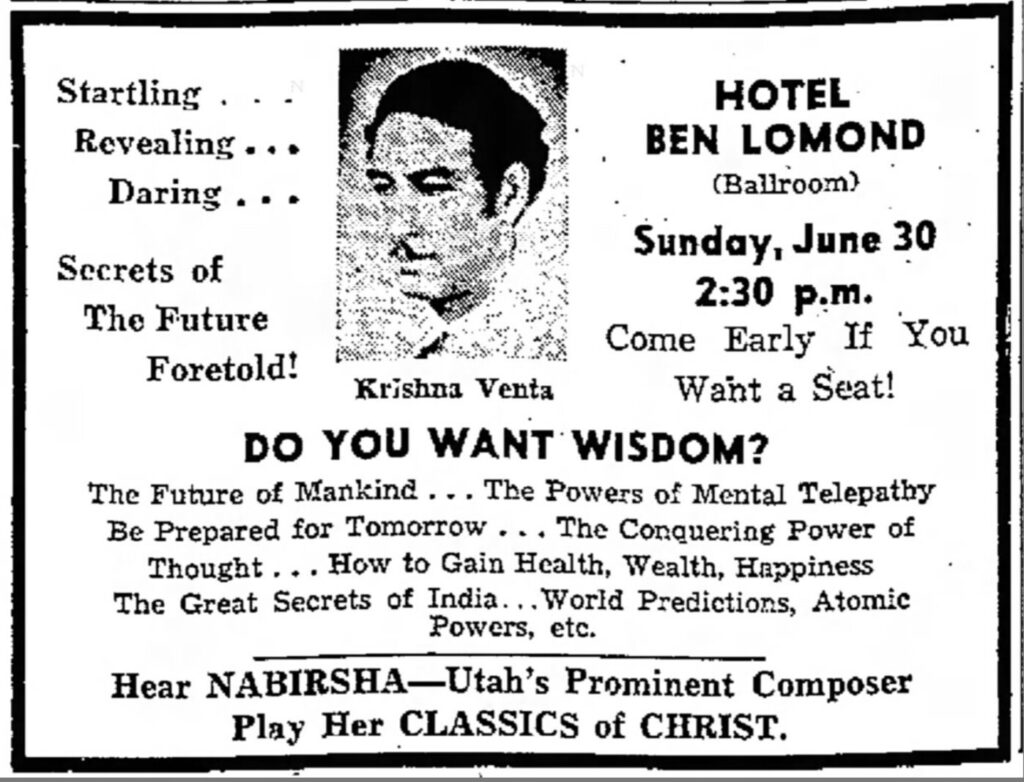
Krishna sports short hair, likely because the army recently discharged him.
According to Merlin Kingston’s 1992 interview, he and his brother invited Venta to hold outdoor lectures on their property in Kay’s Hollow in the Spring and Summer of 1946. During this time, Venta and the Kingstons erected Kay’s Cross. Their association strengthened when Krishna Venta referenced the Aaronic and Melchizedek priesthoods in signage and materials. The Kingston’s, practicing sectarian Mormons, most likely had some part to play in this by “laying of hands” to imbue Venta with this designation and affiliation between their respective cult belief systems.
But How Does Charles Manson Play Into This?
Turns out 1946 was a pivotal year for Venta. He became fascinated with Mormonism (especially the Melchizedek priesthood), and by 1947 had legally changed his name to Krishna Venta and left Utah.
Upon leaving Utah, Venta gained notoriety and followers (eventually around 100 give or take) and started the Wisdom Knowledge Faith Love (WKFL) Fountain of The World cult. They lived on 25 acres in Box Canyon in California where they built a monestary in 1948.
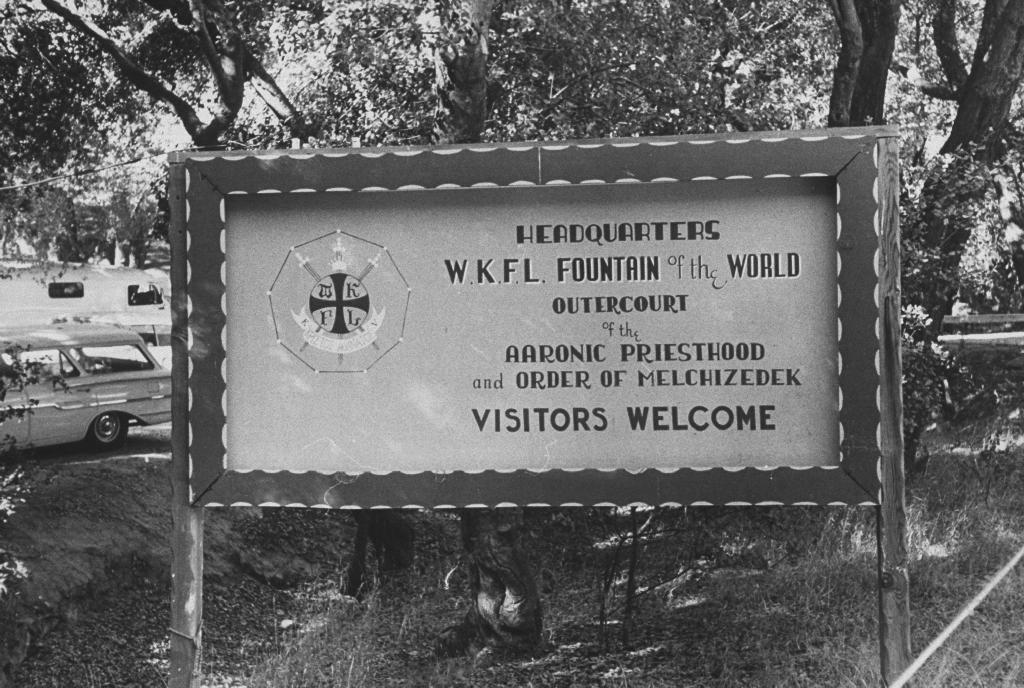
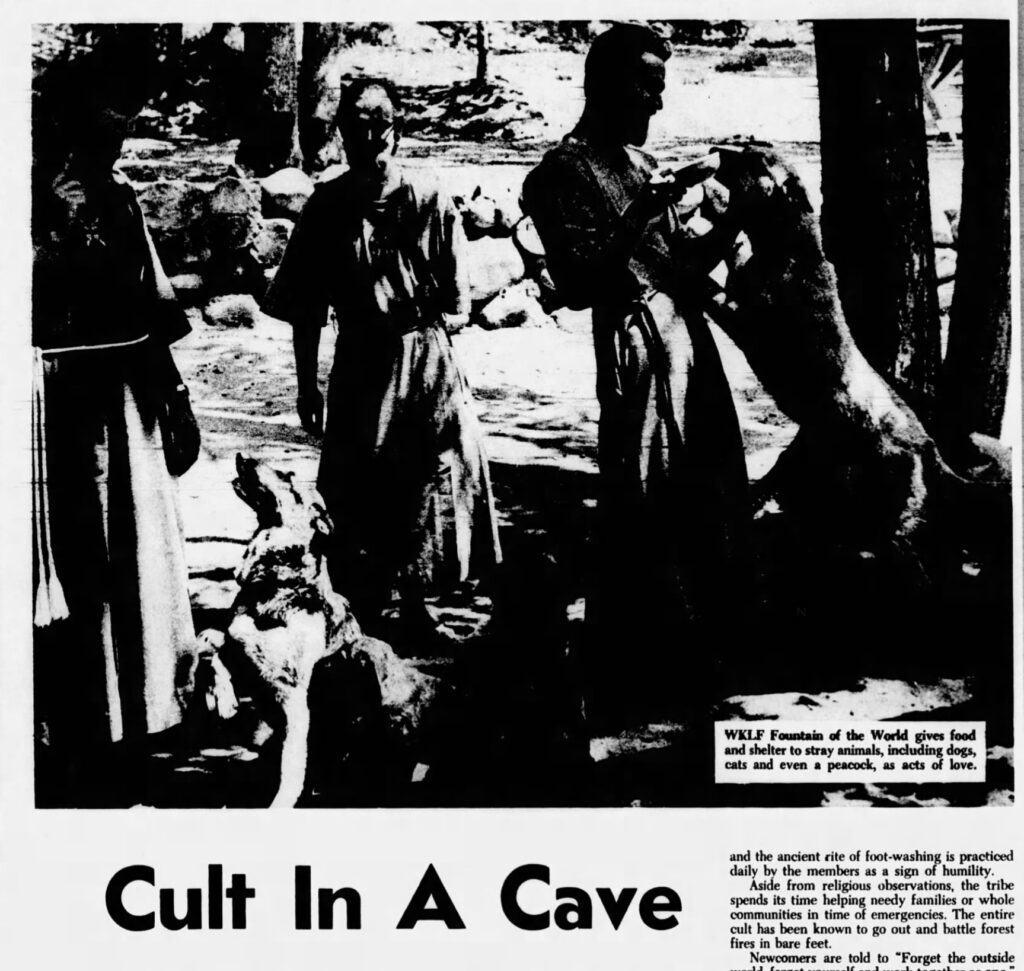
Fountain members mostly kept to themselves, always walked around barefoot, and wore long, flowing robes. Not only were they non-violent, but they would help people in the nearby community, including saving victims from a plane crash in the hills near their compound. The Fountain welcomed visitors and invited the local community to watch their plays.
A Prophet or a Fraud? The Cracks Begin to Show
All was not perfect at The Fountain, however. The court jailed Venta for 10 days after he refused to comply with child support orders.His defense of non-payment was that The Fountain members shared all of their assets so none of the money was just his. He frequently traveled to Reno and Vegas, driven by his penchant for gambling. There was also the world travel such as the time he went to London and Rome to try for an audience with the Pope. For a man with no money of his own, he sure seemed to live quite well!
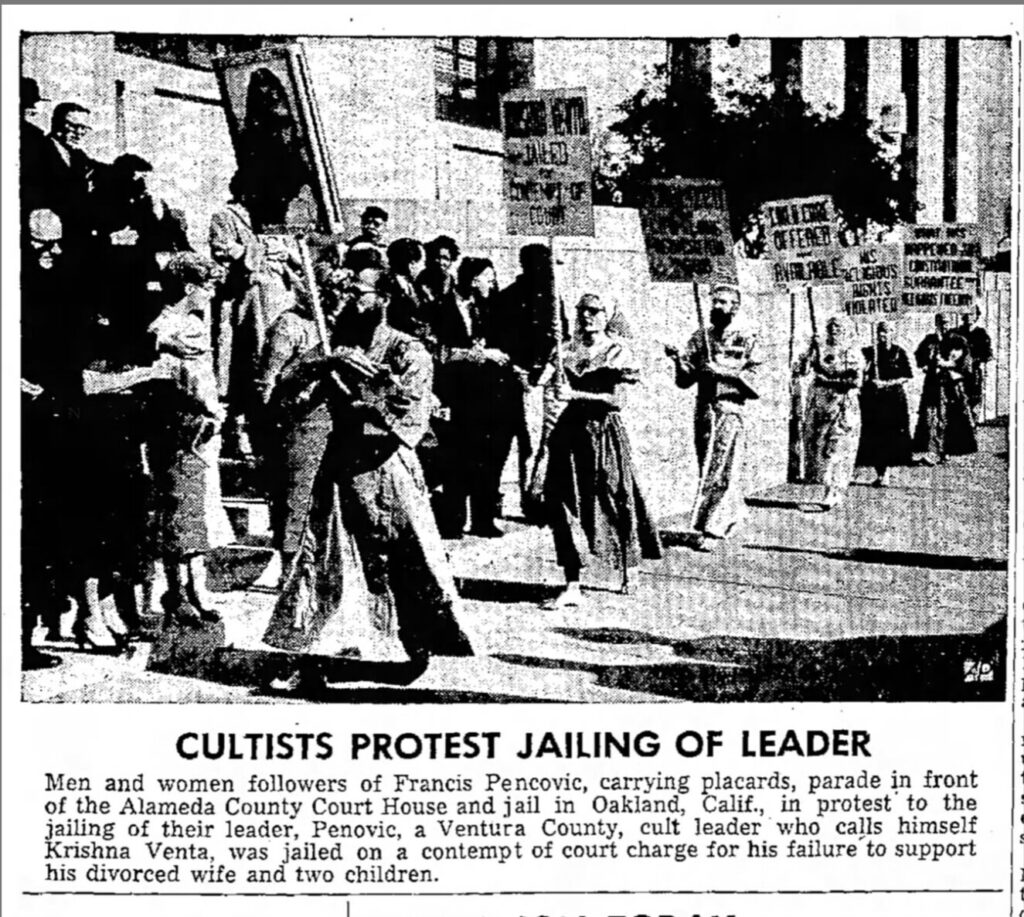

Venta’s grand cult plans came to a shocking end in December, 1958. On the evening of December 10th, two ex Fountain members who had become tired of Venta’s hypocrisy regarding money, (and the fact that he was sleeping with their wives), confronted him to try and get him to confess to crimes while one of them taped the conversation with a hidden tape recorder. Plan A didn’t work, as they figured it wouldn’t, so they decided to go with Plan B and blow themselves and anyone else close enough to bits by detonating a bag full of dynamite.
The explosion killed Krishna Venta and seven other cult members, including women and children.
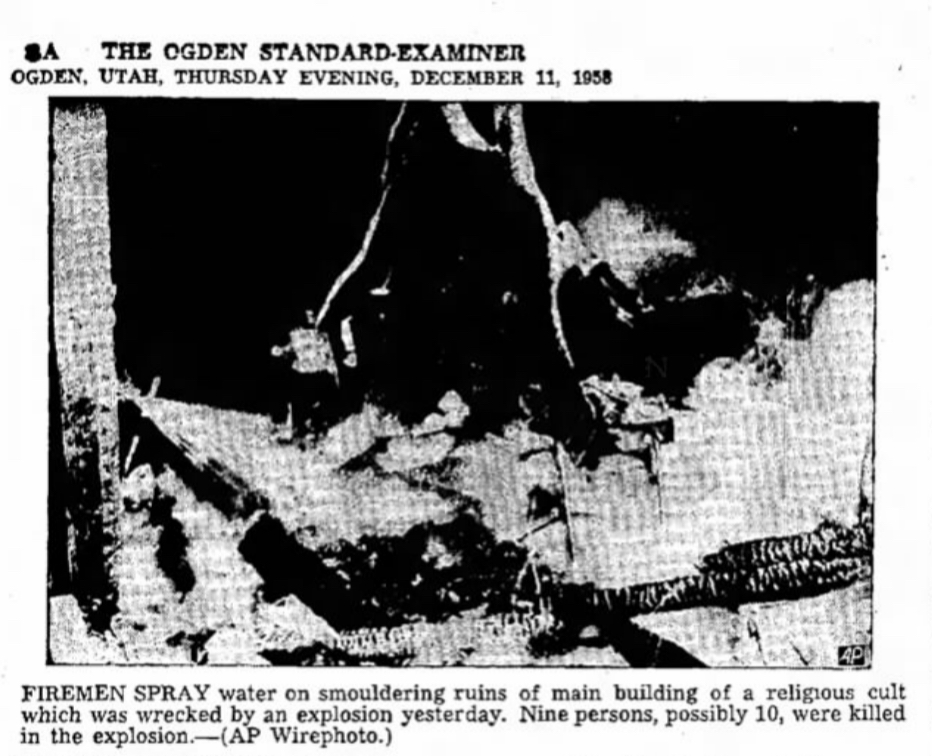

Venta’s Legacy: From Cult Leader to Manson’s Influence
Despite Venta’s death, the Fountain of The World survived and by 1968 Charles Manson, along with a few of his followers would stay at the monastery off and on for a few months. After Manson began scaring the Fountain of the World members, they forced him and his followers to leave. Even though Venta died a decade before Manson ever made it to the Fountain of The World, he seems to have had an impact on Manson. Manson adopted many of Venta’s prophesies and twisted them into his own, much more violent, Helter-Skelter.
If you want to read more about Krishna Venta and Fountain of The World, Shawn Sutherland’s blog does a great job of covering it.
Krishna’s wife and kids eventually left California for Alaska taking a few of the cult members with them. Some of the others decided to join The People’s Temple led by Jim Jones, and we all know how that ended.
What Happened To The Cross?
In the years after Venta’s lectures at Kay’s Hollow, the large stone cross became a challenge and source of intrigue for local teenagers. It evolved into an urban legend with a haunted history. The thrill of visiting Kay’s Cross likely stemmed from two things: eerie tales of spirits and ghouls guarding it at night, or the real danger of trespassing and facing an angry property owner with a gun.
On the night of February 15, 1992, someone blew up the cross, but the motive remains a mystery. I suspect the Kingston family played a role, possibly out of frustration with constant trespassers on their land. After all, who else had the motive — and the means — to haul 80 pounds of dynamite to Kay’s Cross?







































